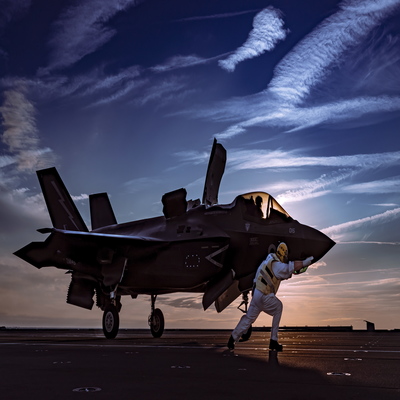This course will provide you with an understanding of the principles, methods and design of guided weapon autopilot and guidance systems and the interaction between autopilot, guidance and other missile sub-systems
At a glance
-
- Dates
-
- 05 - 09 Jan 2026
- DurationFive days
- LocationCranfield University at Shrivenham
- Cost£2,250 - Standalone Short Course fee Concessions available
What you will learn
On successful completion of this course you will be able to:
- Evaluate missile autopilot categories required by various missile guidance systems and design roll, altitude and lateral autopilot systems using closed loop control methods,
- Compare the types of guidance techniques employed on modern guided weapons and classify their usage to design application appropriate command, homing and navigation guidance systems using closed loop control methods,
- Evaluate the interactions between the tracking, guidance and autopilot loops of a missile control system and other key GW sub-systems,
- Classify and evaluate the parametric relationship between guidance, control and other key guided weapon sub-systems,
- Analyse and critically evaluate the performance of guided weapon guidance and autopilot systems.
Core content
- Introduction to Missile Control and Guidance: Introduction to closed loop control applied to guided weapon guidance, classification of guidance methods, autopilots and guidance loop performance requirements. Interaction between control, guidance and other key GW sub-systems.
- Control & Actuation Methods: Aerodynamic control methods, flight stability and control surface positioning. Thrust vector control (TVC), side thrusters and bonkers. Pneumatic hydraulic and electric actuation systems.
- Missile Instrumentation: Control sensors, accelerometers, mechanical angle and rate gyroscopes, solid-state rate sensors, roll resolvers and altimeters.
- Missile Dynamics & Autopilots: Heading and velocity control, missile lateral, roll and altitude dynamics. Lateral roll and altitude autopilots design and application of state space, root-locus and frequency response methods to autopilot design.
- Homing Guidance: Active, semi-active and passive homing, homing guidance loop dynamics and kinematics. Proportional navigation (PN) type guidance and modern homing guidance algorithms. Guidance performance and sensitivity analysis.
- Target Tracking: System and performance requirements, tracker loops and system type, multi-spectral sensors. Alpha-beta trackers and Kalman filters.
- Command Guidance: Line-of-sight (LOS) systems, LOS-beam riders, command off the line-of-sight (COLOS), command guidance loop dynamics, kinematics and stability, LOS trajectories and coverage diagrams, augmented CLOS.
- Navigation Guidance: Navigation guidance loop dynamics, kinematics and stability, inertial navigation and GPS integration, terrain reference systems, hybrid and compound guidance.
Upgrade to a professional qualification
When taken as a Short Course for Credit, 10 credit points can be put towards the Guided Weapon Systems MSc.
Find out more about short course credit points.
Who should attend
Students must have completed Guided Weapons Control Theory in order to take this as a Short Course for Credit. There are no prerequisites if it is taken as a Standalone Short Course.
Speakers
Concessions
A limited number of MOD sponsored places are available.
How to apply
To apply for this course please use the online application form.
Read our Professional development (CPD) booking conditions.
